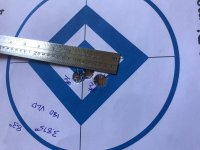ive been reloading for about 10 years (mostly for 270, now a 28 nosler) and have run into a few issues as of late.
so question for you guys,
whats your tolerance on concentricity when sizing brass?
im reloading for a 28 nosler using hornady brass. i have an RCBS FL sizing die and get an average of .007" run out when sized one time. i can get .0015"-.003" thou if i twist the brass in the shell holder a few times and size after each twist, but am i over working the brass doing that? and is hornady brass notorious for this type of issue? are the dies having issues? should i order a bushing die (forster,redding). does my press got too much slop?(rock chucker press). i have yet to check uniformity of the case necks as ive read that could be an issue too. ive just ordered some nosler brass and will test a few of these things out there too. sorry for so many questions but those are a few that i have. what are your thoughts? am i worrying about nothing?
I dont like the fact that i see that much run out on the necks.
thanks for your thoughts.
so question for you guys,
whats your tolerance on concentricity when sizing brass?
im reloading for a 28 nosler using hornady brass. i have an RCBS FL sizing die and get an average of .007" run out when sized one time. i can get .0015"-.003" thou if i twist the brass in the shell holder a few times and size after each twist, but am i over working the brass doing that? and is hornady brass notorious for this type of issue? are the dies having issues? should i order a bushing die (forster,redding). does my press got too much slop?(rock chucker press). i have yet to check uniformity of the case necks as ive read that could be an issue too. ive just ordered some nosler brass and will test a few of these things out there too. sorry for so many questions but those are a few that i have. what are your thoughts? am i worrying about nothing?
I dont like the fact that i see that much run out on the necks.
thanks for your thoughts.






